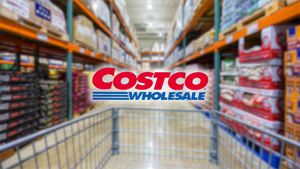By Alexa Dembek, Chief Technology & Sustainability Officer, DuPont
SOURCE: DuPont
DESCRIPTION:
New Water Optimization Index offers optimism and actions for cities worldwide to make headway on SDG goals
At DuPont, our purpose is to empower the world with essential innovations to thrive. To achieve this, we draw inspiration from the United Nations Sustainable Development Goals (SDGs) as the guiding set of principles to understand what society needs now—and how we can deploy our innovation engine to address global challenges. That’s why we set an ambitious goal that by 2030, 100 percent of DuPont’s innovation portfolio will be aligned to meaningfully advance the UN SDGs and create value for our customers.
Which brings me to clean water, a key pillar of our innovation and sustainability strategy. Today, one in nine people around the world — 785 million people — lack access to safe drinking water. UN SGD No. 6 urges nations to ensure that water is clean, accessible, reused, recycled and protected, and that sanitation and wastewater treatment efforts are significantly expanded.
No one disputes that clean water is a human right, yet our collective action to solve this profound challenge will have a direct impact on how we address a host of urgent global issues. Here are just a few examples of the interconnection of water and other SGDs:
- No 2: Zero Hunger: Today, 70 percent of our global freshwater withdrawals are used for agriculture and farming. And the global food and beverage industry depends on a high volume of purified water, not only for ingredient water, but also for processes in manufacturing. As regions face water scarcity, there will need to be tough trade-offs between water and food security—as we are seeing farmers cut off from water in California’s Central Valley in response to shortages in the Sacramento and San Joaquin Rivers.
- No 3: Good Health & Wellbeing: Access to safe water and sanitation sets a solid foundation for our global work to improve health and wellbeing. Protecting this foundation will continue to be important as rising temperatures and extreme weather conditions threaten the safety of our freshwater resources.
- No. 4: Quality Education: Water scarcity in many parts of the world directly and negatively impacts education opportunities for school-aged children. Access to safe water reduces time spent by children collecting water and increases time spent in school while home sanitation solutions improves test scores and increases future economic opportunities, according to Water.org.
- No 5: Gender Equality: Solving our global water challenges will improve the lives of women and girls who bear the primary responsibility for water collection, spending an estimated 200 million hours every day on this task rather than attending school, working, or caring for family members.
- No 11: Sustainable Cities & Communities: By 2050, nearly 68% of the global population is projected to live in cities, many of which are in water-scarce environments, making it of critical importance to adopt solutions that ensure water resilience for the cities of the future.
- No 12: Responsible Consumption and Production: While we often don’t think about the water needed to produce the products on which we rely, approximately 19 percent of total freshwater withdrawals are used for industrial purposes. Regions facing water scarcity are already making tough decisions to balance the water needs for domestic, agricultural and industrial use. Take the historic drought in Taiwan, which is home to two-thirds of the world’s semiconductor manufacturing capacity. To keep water flowing to the semiconductor industry earlier this year, the government stopped watering a vast amount of farmland and turned water off in three major cities twice a week. If producers around the world can adopt a more circular use of water, we can greatly increase water security and mitigate such trade-offs.
- No 13: Climate Action: Water is inextricably linked to climate change, as evidenced by a plea from leaders of several countries at COP26 for the world to commit to an “integrated global water and climate agenda.” The impacts of climate change — rising temperatures, floods, droughts, and sea level rise — are creating an increasingly water-stressed world, forcing millions to migrate to cities. City managers in both developed and developing countries are on the front lines to invest and optimize their water systems to meet the challenges of a climate-constrained world. And as we design and produce clean water technologies to solve these challenges, our customers are clear that those technologies should not negatively impact global climate goals.
At DuPont, we believe that water is essential to human life. The innovation and investment we deliver now will catalyze forward momentum – and when clean water is abundant, accessible, and affordable, people everywhere can thrive.
That’s why we are focused on advancing sustainable water technologies for the purification, conservation and reuse of water. We are also focused on building strategic collaborations with city leaders, NGOs and customers to enable millions of people access to clean water and reduce water security issues.
One such collaboration—the City Water Optimization Index, a new Index from Economist Impact and sponsored by DuPont, offers insight into how well cities around the world are ensuring the reliability, accessibility, and sustainability of water resources. The Index measures progress for 51 global cities with a set 47 of quantitative and qualitative indicators, offering a powerful tool for city leaders to make resource, investment and policy decisions and drive global action to meet SDG No. 6.
Cities around the globe are making strides to build the water-optimized world of the future, today, via careful planning, good governance, and tapping new technologies. And more cities can be on this path to better water optimization—starting with a common set of indicators, global conversations on impactful solutions, and collective action inspired by this knowledge.
One example uncovered in the Index focuses a critical lens on this challenge and lays out a roadmap for progress and hope. São Paulo, a city of more than 12 million in Brazil, has faced several severe water crises in the last decade. That experience drove civil society groups to press for change, resulting in a coalition of NGOs, congressional candidates, and municipal leaders and the creation of the city’s Water Security Commission. Actions undertaken – including municipal water policies, diversification of its natural water portfolio, treating wastewater for industrial use, mandating the use of recycled water and financial incentives for reclaimed water – have made significant headway. The Economist Impact team found São Paulo to be 5th out of 51 cities for water optimization and readiness to provide an ample supply of water to its inhabitants, now and in the future.
As cities focus on water optimization—which relies heavily on sustainable water management practices—they will not only find untapped sources of water, but also untapped sources of hope that they can make progress on numerous global challenges.
I encourage you to learn more at www.dupont.com/water/wateroptimizedworld.html and visit the City Water Optimisation Index at https://impact.economist.com/sustainability/project/water-optimisation/.
KEYWORDS: NYSE: DD, DuPont, Alexa Dembek






